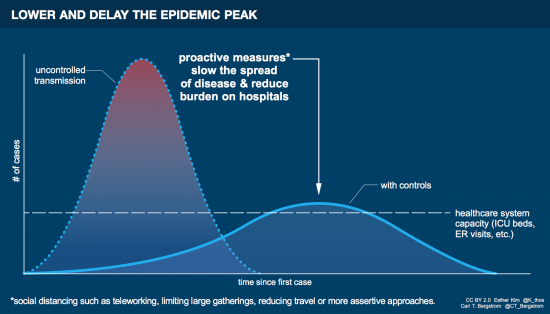Social distancing is one of the most effective ways to slow the spread of COVID-19 as the virus is transferred from person to person. Even if you do not show signs of the virus, you could be a carrier and should practice social distancing whenever possible.
Social distancing guidelines include:
- Staying home whenever possible, especially when you or anyone in your household is sick.
- Maintaining six feet of space between individuals. It’s okay to get fresh air, walk the dog, buy groceries and pick up medications – just maintain six feet of space.
- Eliminating nonessential trips outside the home. Use telecommute options and avoid public transportation whenever possible. Trips to the grocery store and pharmacy are okay.
- Minimizing contact with people, especially nonessential travel and visits with people over the age of 60. Seniors and people with compromised immune systems should stay home whenever possible.
- Rescheduling nonessential social gatherings and travel. There is a current statewide emergency ban on gatherings of more than 50 people and sit-in options at restaurants and bars. Delivery and take-out options are still available.
- Keeping in contact with loved ones remotely.
Social distancing, not social isolation: tips for good behavioral health
While social distancing practices are one of the best ways to slow down the spread of infectious diseases, like COVID-19, stress and lack of human interaction can have negative impacts on our behavioral health.
Here are some recommendations and resources to stay mentally healthy over the next few weeks.
- Know the signs of stress, depression and anxiety, and how to manage those symptoms.
- Take care of your physical health. Eat healthy, nutritious foods, and go for walks outside – just maintain the six-feet social distancing rules.
- Practice social distancing, not social isolation. Use technology to stay virtually connected with loved ones.
- If you’re working from home or your child’s school has been cancelled, create and stick to regular schedules and routines.
- There is going to be constant media coverage on COVID-19. You can avoid overloading on COVID-19 negativity by only consuming information from reliable official resources and know it’s okay to disconnect from time to time.
- Find things to do that relieve stress that don’t involve screen time, like reading books, picking up old creative hobbies or indoor physical activities, including regular stretching.
- Reach out to a professional if you need help. You don’t have to go through it all alone.
- Remember, this won’t last forever. These are temporary situations and will eventually end.

